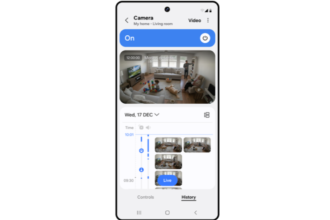1) How AI coaches provide tailored workout plans from real-time biometrics (e.g., WHOOP, Catapult Sports)
When we talk about AI coaches, it really starts with the data. The ability to personalise a workout plan depends on how well you can capture what’s going on inside the body in real time. That’s where biometrics come in. Instead of relying on generic training templates, athletes now have access to continuous streams of information- heart rate, heart rate variability, respiration, even how well they’re sleeping. AI systems can then process all that input and adjust training loads, recovery windows, and even exercise selection on the fly. It takes the guesswork out of training, so athletes know whether to push harder or ease off based on objective signals from their own bodies.
A good example is WHOOP, which has become one of the most widely used consumer wearables in sport. What sets it apart is that it doesn’t just give you raw numbers, it translates them into daily “strain” and “recovery” scores that are easy to act on. Independent studies have reported that WHOOP can measure heart rate with up to 99.7 per cent accuracy and HRV at around 99 per cent compared to clinical baselines. That level of validation is why many professional teams are comfortable using it to shape their training plans. For the everyday athlete, it means waking up with a clear sense of whether today should be a high-intensity session or something more restorative.
At the elite level, platforms like Catapult push the precision even further. Their Vector devices combine GPS, inertial sensors and ECG-derived heart rate to give coaches second-by-second visibility on high-speed running, collision counts and total load. The accelerometers alone sample at up to a thousand times per second, which feeds AI models with incredibly detailed movement data. This makes it possible to spot fatigue patterns or imbalances before they become injuries. It’s no surprise that more than 3,000 teams worldwide are now using Catapult, it’s gone from being cutting-edge to almost standard practice in professional sport.
And then you have force-plate systems in training facilities, which measure thousands of data points from something as simple as a jump. AI can detect subtle asymmetries or neuromuscular fatigue from that data and suggest adjustments to sets, reps or recovery protocols. When you put all these tools together, it shows that AI coaching isn’t just a futuristic idea, it’s already here, actively shaping how athletes at every level train, recover and perform.
2) Virtual AI advisors that recommend on-the-spot tactical adjustments during live matches
When it comes to live matches, AI is starting to act almost like a virtual assistant on the sidelines. At the elite level, tracking systems can capture every movement of players and the ball in real time, then feed that data back as tactical insights. In the NBA and Premier League, for example, Genius Sports’ Second Spectrum platform maps positioning so precisely that coaches and analysts can see emerging patterns and adjust on the fly.
We’re seeing a similar approach in the NFL with Next Gen Stats, which runs on AWS. These models can surface probabilities like the chance of a quarterback being pressured or a tackle being made, and those predictions are now even overlaid on live broadcasts. In football, companies like Kognia and Hudl use computer vision to detect tactical shapes and automatically push clips or cues to analysts’ devices during a match, so feedback reaches the pitch almost instantly. Even refereeing tech has evolved in the same direction- the Premier League’s semi-automated offside system uses skeletal tracking to cut review times by around 30 seconds, and the same backbone of data is also available to coaches looking for an edge in real time.
3) Implications for live betting: AI predictions vs human coach decisions
In-play betting has really become the heartbeat of the sports wagering industry. In the US, more than half of all bets in 2024 were placed live, and globally it’s expected to reach just over 50 per cent of total betting by 2028. That’s being driven by the arrival of low-latency official data feeds and AI models that can update win probabilities or micro-event outcomes in seconds.
Some of these models are remarkably accurate. Academic research in tennis, for instance, shows mid-match prediction models exceeding 70 per cent accuracy once a small slice of live data is observed. That’s why sportsbooks lean so heavily on algorithm-driven pricing. But sport is unpredictable, and this is where the human element still matters. A coach making a surprise substitution or tactical switch can shift the odds dramatically, precisely because it defies what the model expected. That tension between machine forecasts and human decisions is part of what keeps live markets so dynamic.
4)How sponsorships can leverage AI performance data for targeted athlete partnerships?
Sponsorships these days aren’t just about star power, especially in the APAC region, they’re becoming fiercely data-driven. Brands now use AI to assess athletes not just by how they perform on the field, but also by how well they connect off it, factoring in audience demographics, social sentiment and logo exposure. Technology tools like computer vision make it possible to put a real-time value on a player’s visibility, which is priceless when you’re looking to back rising talent with the right audience fit.
To put the shift into context, the APAC sports sponsorship market was valued at USD 13.49 billion in 2024 and is expected to grow at around 10 per cent CAGR through to 2031, with esports among the fastest-growing segments. One such example is Riot Games’ long-running collaboration with Intel, which has supported both global tournaments and regional competitions like the Intel Arabian Cup. Another is Tencent, which generated roughly USD 64 million from esports sponsorships in just the first half of 2019, a figure that underlines the commercial weight behind tech–sport partnerships in the region.
For example, 1xBet, which is active across APAC markets, can apply these tools to identify athletes with the strongest audience resonance and to structure deals on measurable impact rather than prestige.. You can spot athletes whose playing style and fan behaviour resonates with your target audience, use real-time visibility metrics to fine-tune campaign strategies, and negotiate deals based on actual media value rather than intuition. This kind of sponsorship is backed by data, precision and performance, not just prestige.
5) How AI-driven tactical decisions influence real-time betting dynamics
Live betting markets are extremely sensitive to what’s happening on the pitch or field, and AI is amplifying that connection. When tracking systems highlight a tactical vulnerability, maybe a defender getting repeatedly isolated or a drop in pressing intensity, odds for next-goal or next-play markets can adjust within seconds. As official tracking and ultra-low-latency video become standard, the time between an on-field decision and a change in betting lines is shrinking fast.
At the same time, human judgement hasn’t been replaced. Coaches sometimes make decisions that models would rate as sub-optimal, and when those gambles pay off, it creates sudden swings in the markets. That’s why the healthiest systems are a balance: algorithms providing speed and consistency, with human decisions still capable of reshaping the narrative. Integrity frameworks from governing bodies also remain essential as micro-betting grows, to make sure this feedback loop between coaching, AI and betting stays transparent and fair.
Legal Disclaimer: The Editor provides this news content "as is," without any warranty of any kind. We disclaim all responsibility and liability for the accuracy, content, images, videos, licenses, completeness, legality, or reliability of the information contained in this article. For any complaints or copyright concerns regarding this article, please contact the author mentioned above.















